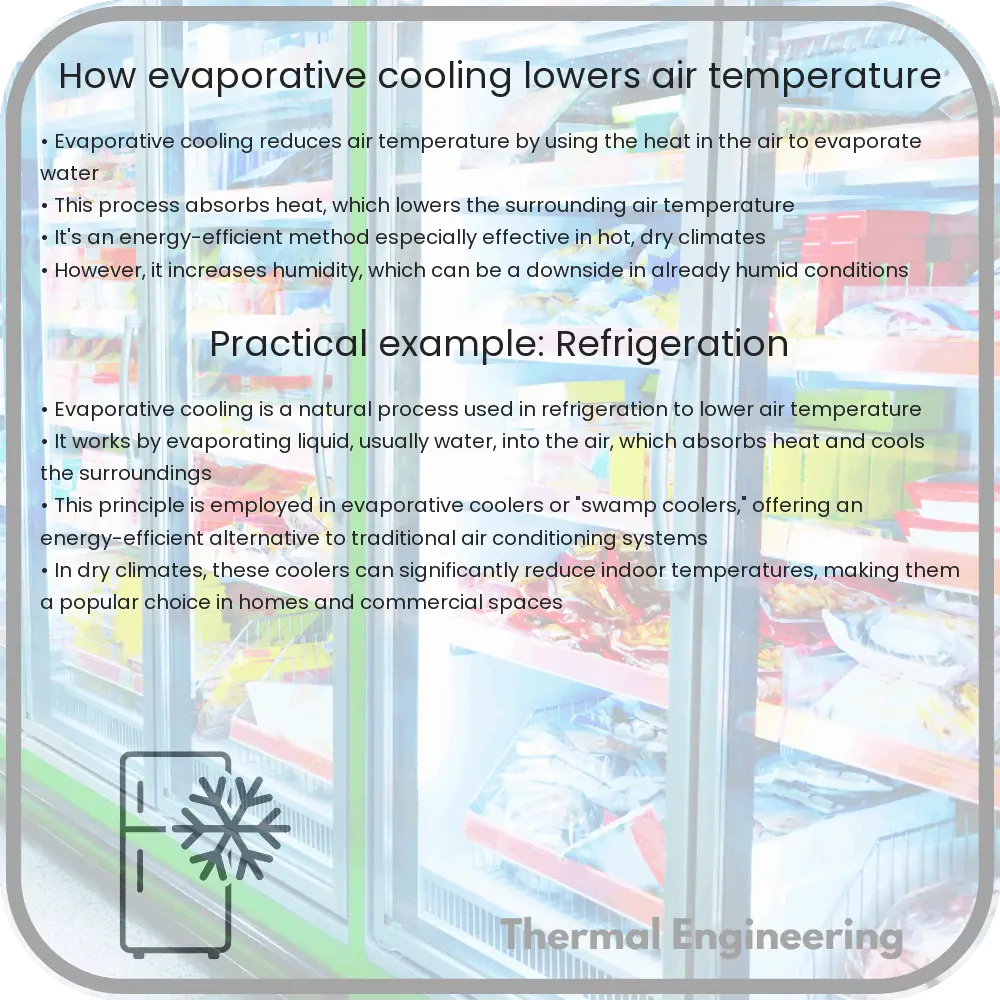Dive into the workings of evaporative cooling, an eco-friendly method that lowers air temperature efficiently using the principles of water evaporation.

Understanding Evaporative Cooling: How It Lowers Air Temperature
Evaporative cooling is a simple, yet effective, process commonly used to lower air temperature through the evaporation of water. This natural phenomenon is also the basis for engineering systems like cooling towers, evaporative coolers (also known as swamp coolers), and even has applications in modern air conditioning technologies. Let’s dive into the science behind this cooling method and how it’s applied in everyday engineering solutions.
The Science Behind Evaporative Cooling
The fundamental principle behind evaporative cooling is that water requires heat energy to evaporate. This energy is drawn from the surrounding environment, which decreases the temperature of the air—a process known as adiabatic cooling. The effectiveness of evaporative cooling depends on several factors, primarily the humidity of the air and the ambient temperature.
- Temperature: Warmer air can hold more moisture, which helps in increasing the rate of evaporation.
- Humidity: Lower humidity aids the evaporation process, making evaporative cooling more effective in arid climates.
- Air Flow: Increased air movement can enhance evaporative cooling by moving the more humid air away from the cooling area and bringing in drier air, which enhances further evaporation.
How Evaporative Cooling Systems Work
Evaporative cooling systems use a fan to draw hot, dry air through a water-soaked pad. As the air passes through the pad, water evaporates, absorbing heat from the air, and thereby cooling it. The cooled, more humid air is then circulated into the space that needs cooling.
- Intake of Hot Air: The system pulls in hot, dry external air into the unit.
- Water Evaporation: The hot air passes through moist pads where it absorbs moisture. This process requires heat from the air, which drops the temperature significantly.
- Release of Cooled Air: The cooled air is then pushed into the target environment, reducing the overall temperature.
Applications of Evaporative Cooling
Evaporative cooling is not only a feature of modern air conditioners but is also critical in industrial applications such as:
- Cooling Towers: Used in many industrial processes, particularly in power plants and large-scale cooling facilities.
- Evaporative Coolers: Common in residential and commercial buildings in dry climates, offering a more energy-efficient option to traditional air conditioning.
- Data Centers: Used to manage the climate, keeping computer systems at optimal operating temperatures while minimizing energy consumption.
The Efficiency of Evaporative Cooling
Evaporative cooling is generally more energy-efficient compared to traditional air conditioning systems, especially in hot, dry climates. The efficiency comes from the fact that this process uses significantly less electricity, mainly for running the fans and water pumps as opposed to the compressors and refrigerants used in conventional air conditioning systems.
Nevertheless, the efficiency and suitability of evaporative cooling systems depend heavily on the local climate—particularly humidity levels. In humid regions, the additional moisture added to the air by the evaporative process can make the environment uncomfortably muggy, rather than cool.
Understanding the principles of evaporative cooling and its applications allows us to appreciate how ancient principles continue to influence modern technological solutions. Through the principles of physics and innovative engineering, evaporative cooling remains a cornerstone in the quest for energy-efficient climate control solutions.
Conclusion
Evaporative cooling offers a fascinating glimpse into the practical application of basic physical principles. By harnessing the latent heat of vaporization, engineers can design systems that cool environments effectively while minimizing energy use. As our need for sustainable solutions grows, the role of evaporative cooling in providing eco-friendly alternatives becomes increasingly important.